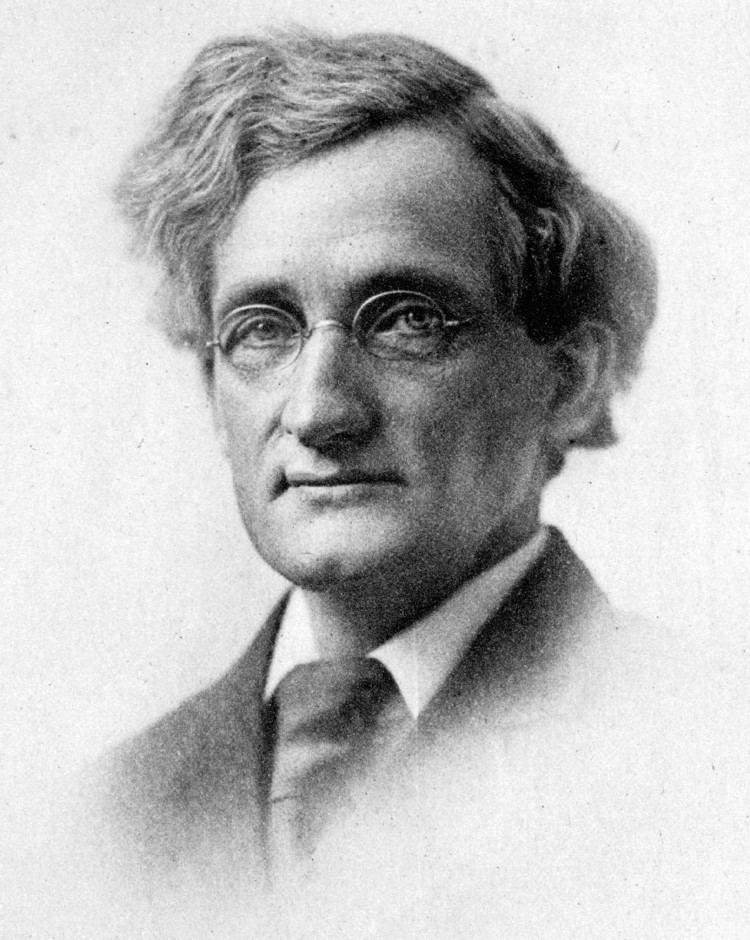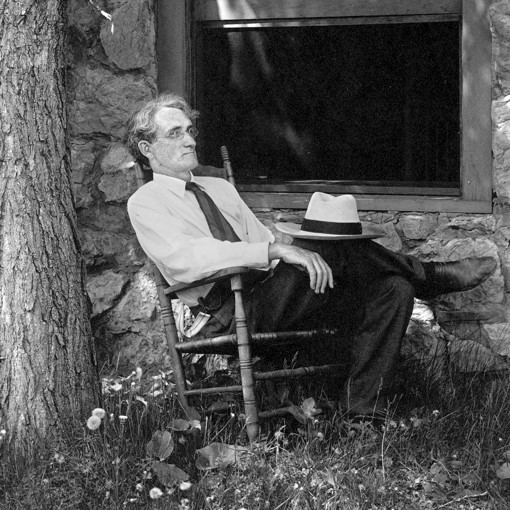Citizenship American Role Botanist | Name Liberty Bailey | |
 | ||
Born March 15, 1858South Haven, Michigan ( 1858-03-15 ) Alma mater Michigan Agricultural College Organizations founded Cornell University College of Agriculture and Life Sciences, American Society for Horticultural Science Books The holy earth, Hortus third, Manual of Gardening: A Practic, How plants get their names, The nature‑study idea Similar People Asa Gray, Charles Darwin, Andrew Dickson White, Edward Brodhead Green | ||
Voices from the field liberty hyde bailey
Liberty Hyde Bailey (March 15, 1858 – December 25, 1954) was an American horticulturist, botanist and cofounder of the American Society for Horticultural Science. Bailey is credited with being instrumental in starting agricultural extension services, the 4-H movement, the nature study movement, parcel post and rural electrification. He was considered the father of rural sociology and rural journalism.
Contents
- Voices from the field liberty hyde bailey
- 2017 Liberty Hyde Bailey Lecture From Farm to Fork
- Biography
- Rediscovery of Gregor Mendels work
- Agrarian ideology
- Tribute to Bailey
- Selected articles
- References

2017 Liberty Hyde Bailey Lecture: From Farm to Fork
Biography

Born in South Haven, Michigan, as the third son of farmers Liberty Hyde Bailey Sr. and Sarah Harrison Bailey, Bailey entered the Michigan Agricultural College (MAC, now Michigan State University) in 1878 and graduated in 1882. The next year, he became assistant to the renowned botanist Asa Gray, of Harvard University. This was arranged by a professor at MAC, William James Beal. Bailey spent two years with Gray as his herbarium assistant. The same year, he married Annette Smith, the daughter of a Michigan cattle breeder, whom he met at the Michigan Agricultural College. They had two daughters, Sara May, born in 1887, and Ethel Zoe, born in 1889.

In 1888, he moved to Cornell University in Ithaca, New York, where he assumed the chair of Practical and Experimental Horticulture. He was elected an Associate Fellow of the American Academy of Arts and Sciences in 1900. He founded the College of Agriculture, and in 1904 he was able to secure public funding. He was dean of what was then known as New York State College of Agriculture from 1903-1913. In 1908, he was appointed Chairman of The National Commission on Country Life by president Theodore Roosevelt. Its 1909 Report called for rebuilding a great agricultural civilization in America. In 1913, he retired to become a private scholar and devote more time to social and political issues. In 1917 he was elected a member of the United States National Academy of Sciences.
He edited The Cyclopedia of American Agriculture (1907–09), the Cyclopedia of American Horticulture (1900–02) (continued as the Standard Cyclopedia Of Horticulture (1916–1919)) and the Rural Science, Rural Textbook, Gardencraft, and Young Folks Library series of manuals. He was the founding editor of the journals Country Life in America and the Cornell Countryman. He dominated the field of horticultural literature, writing some sixty-five books, which together sold more than a million copies, including scientific works, efforts to explain botany to laypeople, a collection of poetry; edited more than a hundred books by other authors and published at least 1,300 articles and over 100 papers in pure taxonomy. He also coined the words "cultivar", "cultigen", and "indigen". His most significant and lasting contributions were in the botanical study of cultivated plants. Bailey's publisher was George Platt Brett, Sr. of Macmillan Publishers (United States).
Rediscovery of Gregor Mendel's work
Bailey was one of the first to recognize the overall importance of Gregor Mendel's work. He cited Mendel's 1865 and 1869 papers in the bibliography that accompanied his 1892 paper, "Cross Breeding and Hybridizing." Mendel is mentioned again in the 1895 edition of Bailey's "Plant Breeding."
Agrarian ideology
Bailey represented an agrarianism that stood in the tradition of Thomas Jefferson. He had a vision of suffusing all higher education, including horticulture, with a spirit of public work and integrating "expert knowledge" into a broader context of democratic community action. As a leader of the Country Life Movement, he strove to preserve the American rural civilization, which he thought was a vital and wholesome alternative to the impersonal and corrupting city life. In contrast to other progressive thinkers at the time, he endorsed the family, which, he recognized, played a unique role in socialization. Especially the family farm had a benign influence as a natural cooperative unit where everybody had real duties and responsibilities. The independence it fostered made farmers "a natural correction against organization men, habitual reformers, and extremists". It was necessary to uphold fertility in order to maintain the welfare of future generations.
According to Bailey, the American rural population, however, was backward, ignorant and saddled with inadequate institutions. The key to his reform program was guidance by an educated elite toward a new social order. The Extension System was partly pioneered by Bailey. The grander design of a new rural social structure needed a philosophical vision that could inspire and motivate. For this purpose, he wrote Mother Earth, a "powerful testament to Nature as God and to the farmer as acolyte and collaborator in the process of ongoing creation". It conformed largely to the Freemason creed that Bailey had been brought up with, and it was not explicit in demanding that traditional Christian dogma be discarded.
Bailey's real legacy was, according to Allan C. Carlson, the themes and direction that he gave the new agrarian movement, ideas very different from previous agrarian thought. He saw technological innovation as friendly to the family farm and inevitably resulting in decentralization. He was scornful of the actual forms of peasant life and wanted to transform it by cutting the farmers loose from "the slavery of old restraints". Parochial and communal social groups should be broken down and replaced by "inter–neighborhood" and "inter–community" groups, while new leaders would be called in "who will promote inclusive rather than exclusive sociability." Bailey and his followers held a quasi–religious faith in education by enlightened experts, which meant suppression of inherited ways and substitution by progressive ways. It was accompanied by a corresponding hostility to traditional religion.
Bailey's simultaneous embrace of the rural civilization and of technological progress had been based on a denial of the possibility of overproduction of farm products. When that became a reality in the 1920s, he turned to a "new economics" that would give farmers special treatment. Finally, after desperately toying with Communism, he had to choose between fewer farmers and farm families and restraint on technology or production. He chose to preserve technology rather than the family farms. After this, he retreated from the Country Life movement into scientific study.
Bailey's influence on modern American Agrarianism remains determinative. The inherent contradictions of his ideas have been equally persistent: the tension between real farmers and rural people and the Country Life campaign; difficulties to understand the operative economic forces; the reliance on state schools to safeguard family farms; and hostility to traditional Christian faith.
Tribute to Bailey
He was awarded the Veitch Memorial Medal of the Royal Horticultural Society in 1897.
Cornell has memorialized Bailey by dedicating Bailey Hall in his honor. Since 1958 the American Horticultural Society has issued the annual Liberty Hyde Bailey Award. A residence hall in Brody Complex at Michigan State University, and an elementary school in East Lansing, Michigan, were also named after him.
In 1928, a tree (Sterculia foetida) dedicated to Bailey was planted at the University of Hawai‘i at Mānoa Campus Arboretum, and is now listed there as an Exceptional Tree.
About 140 years after his birth, the Liberty Hyde Bailey Scholars Program was created at Michigan State University, the institution of higher learning where Bailey began his career. The Bailey Scholars Program incorporates L.H. Bailey's love of learning and expressive learning styles to provide a space for students to become educated in fields that interest them.
